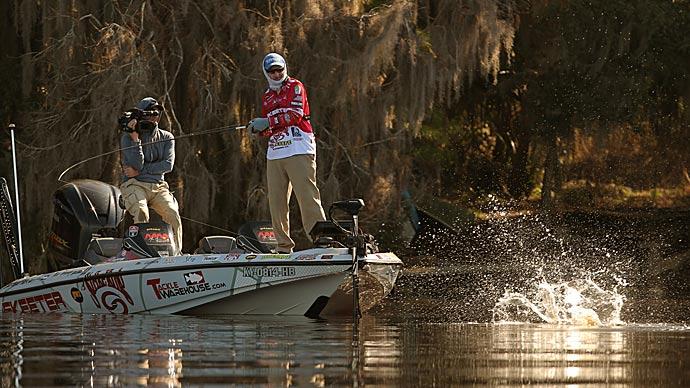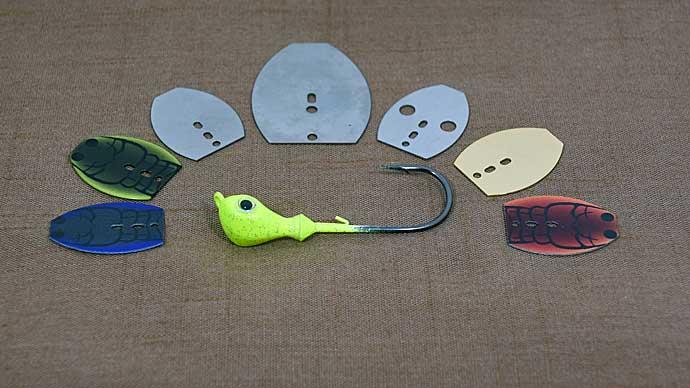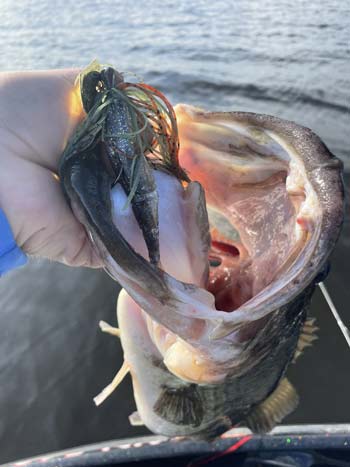
It’d be hard to argue against the ChatterBait being the most effective and dominating lure over the past decade or so. These vibrating jigs, or bladed jigs, as many call them, are some of the best-producing lures for bass today. They work in many different situations and can be fished around grass, rocks, and anywhere else a bass may live. The unique blade design puts off tons of vibration, making them one of the best lures you can use in shallow water.
As lures have evolved, there are now more bait options, and anglers are finding even more ways to use them to catch fish. These baits are so popular because they work and have a knack for catching big bass.
Here’s a quick rundown of everything you need to fish a ChatterBait.
Picking the Right ChatterBait
The ChatterBait is the Kleenex of fishing lures, and no matter the brand, they are all often called ChatterBaits. The Z-Man versions are still the most popular originals, even though other companies make their own versions that catch fish.
One of the most significant considerations, besides the brand and model, is choosing the correct size. The 3/8 and ½-ounce versions are the two most popular, and you should have a few of each in a few basic colors. These two sizes will cover most situations, but heavier versions allow you to fish deeper. Many anglers use these and have good luck targeting deeper rocks, grass, and ledges during summer.
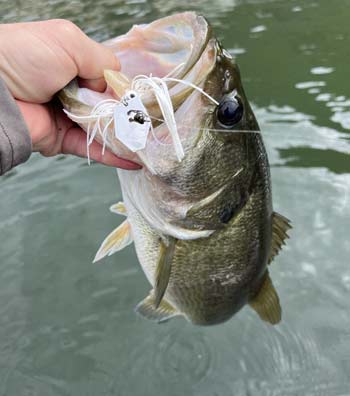
For colors, a handful is all you need. Black and blue is great for stained and dirty water, green pumpkin is a universal color to imitate bluegill, and any of the white versions are great for mimicking shad and other baitfish. Another one to add is a red version like Fire Craw that works great early in the year and imitates a crawfish in muddy water.
The Z-Man Evergreen Jack Hammer ChatterBait is the top-of-the-line and most expensive bait offered. It has premium components and a great trailer and skirt. One more key with this bait is how easy it is to get it to vibrate during the retrieve, whereas some baits take a moment or two to get going after a cast.
Another great option that costs roughly half as much is the ChatterBait EVO, which works very well. For times when you want to downsize, the Mini Max is a great choice. Some great non-Z-Man options are the Strike King Thunder Cricket and Berkley Slobberknocker, which run differently than the Z-Man offerings but still catch fish.
Plastic Trailers and Gear Selection
One of the best ways to change the action of your ChatterBait is to experiment with different soft plastic trailers. Thin baitfish-imitating trailers like a Hog Farmer Spunk Shad or Zoom Super Fluke will allow the bait more side-to-side movement and give it the "hunting" action as it unpredictably darts to the right and left during the retrieve.
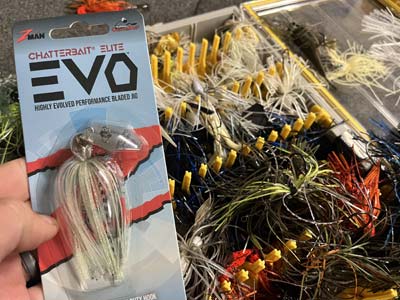
Two other excellent options are the Yamamoto Zako and the Z-Man Razor ShadZ, which look like small baitfish. You can also add a soft swimbait like a Keitech Swing Impact FAT or similar-style baits to give the bait more action and keep it slightly higher in the water column.
Picking the right rod, reel, and line is essential when fishing a vibrating jig. Much depends on your preference, but the consensus is to use a rod with some give so you don't pull the bait from the fish. Many anglers prefer rods designed for crankbaits, both fiberglass and fiberglass and graphite composite models. A rod in the 7-foot to 7-foot, 6-inch range with medium-heavy power works excellent for these baits.
For reels, a standard baitcast reel in the 6.4:1 to 7.1:1 range works well, and a fluorocarbon line, like Seaguar InvizX, between 15 and 20-pound tests, works fine for these lures. Some anglers prefer braided lines when fishing around vegetation, but a good quality fluorocarbon is strong enough and has a slight stretch that helps prevent pulling the bait from a fish when a strike is detected. A braided line can almost be too sensitive when a slight delay in setting the hook will allow you to land more bass.
Retrieves and Where to Fish Them
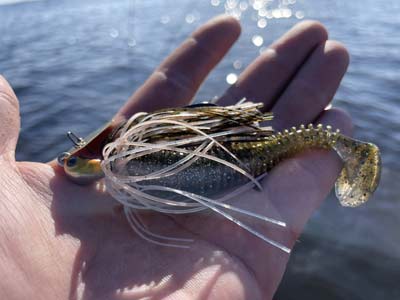
The great thing about these baits is that they can be fished everywhere but excel when fishing around vegetation. You can fish a ChatterBait around scattered grass or as you work down a weed line and expect to get bites. They also excel when fishing right in the grass and ripping them free when they hang up with vegetation, where many of your bites will occur.
ChatterBaits work great around grass and other shallow cover, but they have one weakness: wood. They tend to snag fairly easily around brush and laydowns, and while they still work there, proceed with caution when fishing them around wood and expect to hang up at times.
Fishing a ChatterBait is simple, and a standard cast and retrieve work well. The blade and soft plastic trailer will give your bait all the action needed to get a fish to bite. One thing you can do during the retrieve to give the bait more action is to give your reel quick turns to pulse the bait and change directions.
You can also do this with your rod, and these simple movements can pay big dividends in getting fish to follow the bait and react. Like everything else, experiment with different retrieve speeds and mix in these small changes during the retrieve until you figure out what the fish like best that day.
There is no wrong place or time to throw a ChatterBait, and its effectiveness has replaced spinnerbaits, swim jigs, and swimbaits in many shallow-water situations for some anglers. It works in many conditions, as those baits do, and continues to catch fish yearly because of how well the ChatterBait works.



